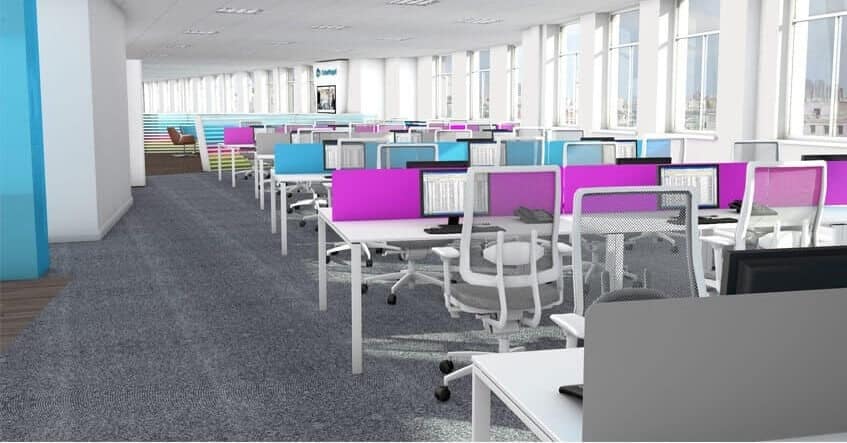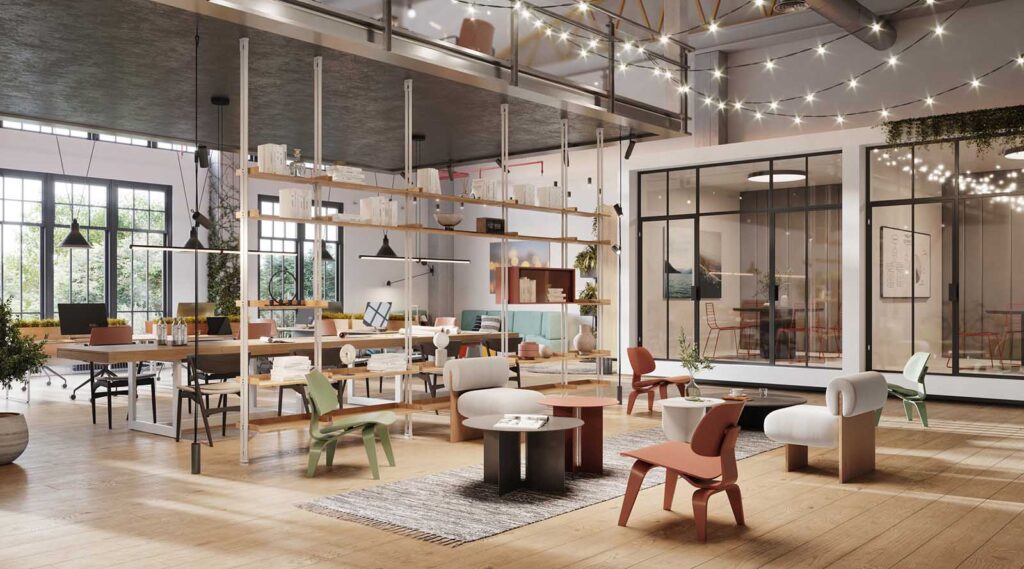Any successful workplace fit-out project relies upon careful office space planning, and those who ignore this critical stage of the process risk encountering a number of significant issues. Here, we take a look at 10 of the biggest problems that can stem from ignoring the planning phase and diving straight in.
1. Employees Might Become Sick
A Human Spaces report found that 30 percent of workers do not work in environments with adequate natural light, which leads to a 13 percent lower level of well-being. In addition, layouts that keep workers seated contribute towards a myriad of health problems, including heart disease and depression, according to Get Britain Standing.
2. Productivity Will Suffer
Adopting a one size fits all approach can hinder some staff. For instance, while the open plan design has emerged as the most popular option, it won’t work for everyone. Research from Ipos found that 95 percent of people say working privately is important, but only 41 percent feel able to do so. The resulting loss of productivity caused by noise distraction is estimated to be between 15 and 20 percent.
3. Collaboration Will Be Stifled

Certain departments within a business will need to collaborate with each other, and ignoring space planning can make this difficult. With some careful consideration, however, the departments most likely to need to collaborate can be situated near one another, or near designated collaboration areas, reducing the distraction for others.
4. Clients May Be Put Off

First impressions count, so it is especially important to plan client spaces properly. In fact, Business Insider states that a client’s first impressions of your business will be formed in just seven seconds. Think about what should be visible from the reception and what should not. Ignoring this could put clients off before you even speak to them.
5. Space Could Be Wasted
One of the most important parts of the planning stage is carrying out a utilisation study. This allows you to find out exactly how your current office space is used. Ignoring this can result in meeting rooms that are not used, or storage space that is not needed, which means you will be paying for unnecessary extra floor space.
6. Staff Will Look Elsewhere

Smart space planning involves asking staff for their insight. If you implement a design that makes it unnecessarily difficult for staff to do their job, or one which displeases them in other ways, you could risk losing them. While a certain level of staff turnover is inevitable, high levels can be extremely difficult to contend with.
7. You May Struggle to Attract Candidates
In addition to losing staff, ignoring the space planning stage could prevent you from attracting the best candidates in the first place. A Human Spaces report found that almost a quarter of people say that the design of an office would affect their decision to work for that company.
8. It Will Cost You Money
Different floor plans will use a different amount of floor space and more floor space means a larger building, meaning more money. For instance, some estimates suggest a cubicle layout uses around 25 percent more space per person than an open plan. So while it is important to choose a design that fits the nature of your business, it is also important to consider how to best utilise the available space.
9. Your Churn Rate Could Rise

Churn refers to the relocation of employees and your churn rate is the percentage of employees who have been moved in the past year. Poor office planning is likely to lead to a high churn rate, because issues with the layout will need to be addressed as they arise. However, unnecessary churn is costly. An International Facility Management Association survey found the average cost of a move to another workstation is $152 per person.
10. Relocation May Be Necessary
Finally, a sensible space plan will allow room for future growth, or for the implementation of the new technology. Failure to adequately plan can mean that your current office building will have a limited shelf life, meaning that a future relocation, and all the upheaval associated with that, will be inevitable
For more information on Enigma Visual Solutions click here.
Photos: Enigma, StockSnap.io, Pixabay, mhouge, Enigma
If you like writing about facilities management, and are interested in contributing to our OfficeSpace Guest Blog series, please contact Zoe North.




